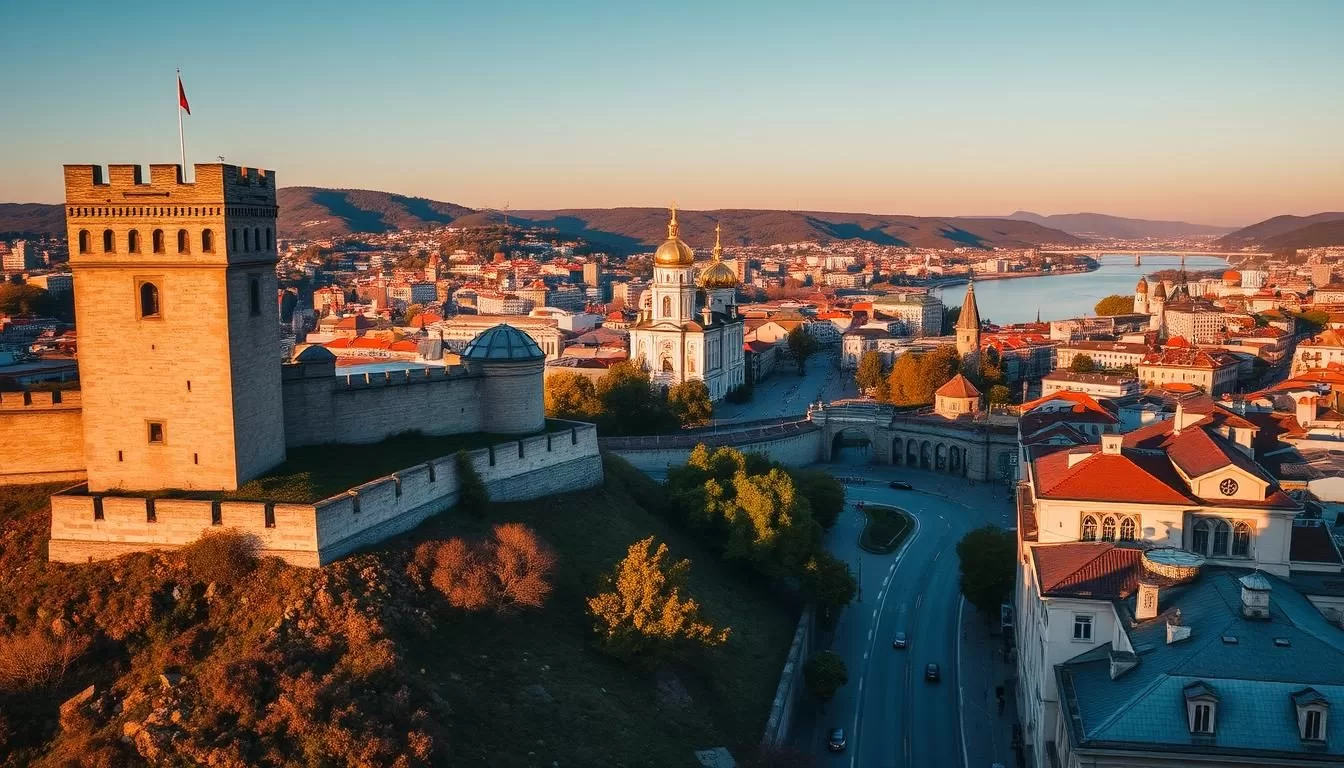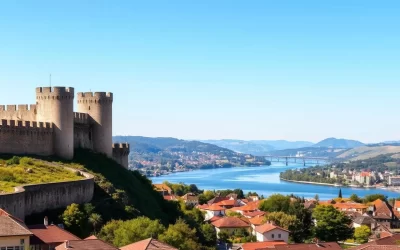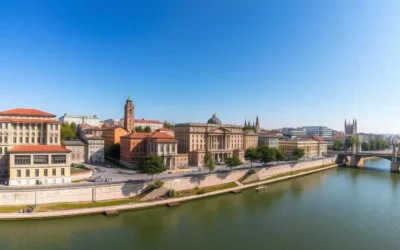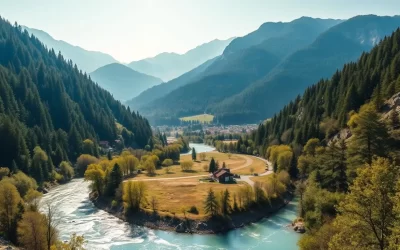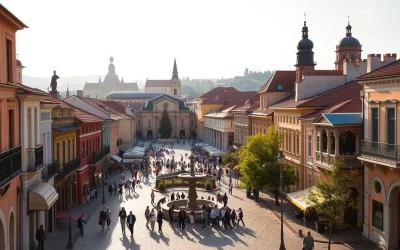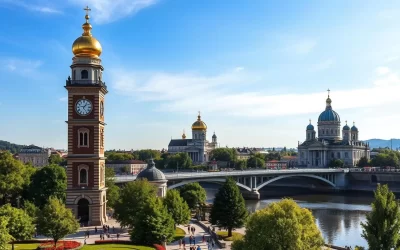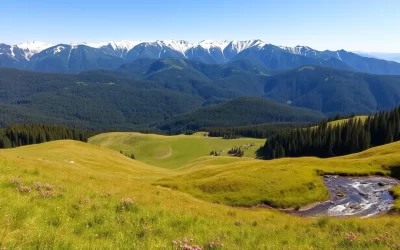✓ Accommodations✓ Flights✓ Rental Cars
You’re about to discover a vibrant city that seamlessly blends history with modern energy. Located at the confluence of the Sava and Danube rivers, this captivating place offers a unique geographical setting that has shaped its history and development over centuries.
As you explore this underrated Balkan gem, you’ll find a mix of attractions that cater to diverse interests. From ancient fortresses to floating nightclubs, and traditional kafanas to hip coffee shops, there’s something for everyone in this dynamic city. Whether you’re a history buff, a foodie, or an adventure-seeker, you’ll be drawn to the city’s diverse neighborhoods, such as bohemian Skadarlija and riverside Savamala.
With its rich history, cultural landmarks, and lively atmosphere, you’ll experience the city’s unique charm. Get ready to uncover the hidden gems and make the most of your visit.
Discovering Belgrade: Serbia’s Vibrant Capital
As you step into Belgrade, Serbia’s vibrant capital, you’ll be greeted by a city that’s as rich in history as it is in energy. Belgrade is a place where the old and the new coexist, creating a unique atmosphere that’s hard to find elsewhere.
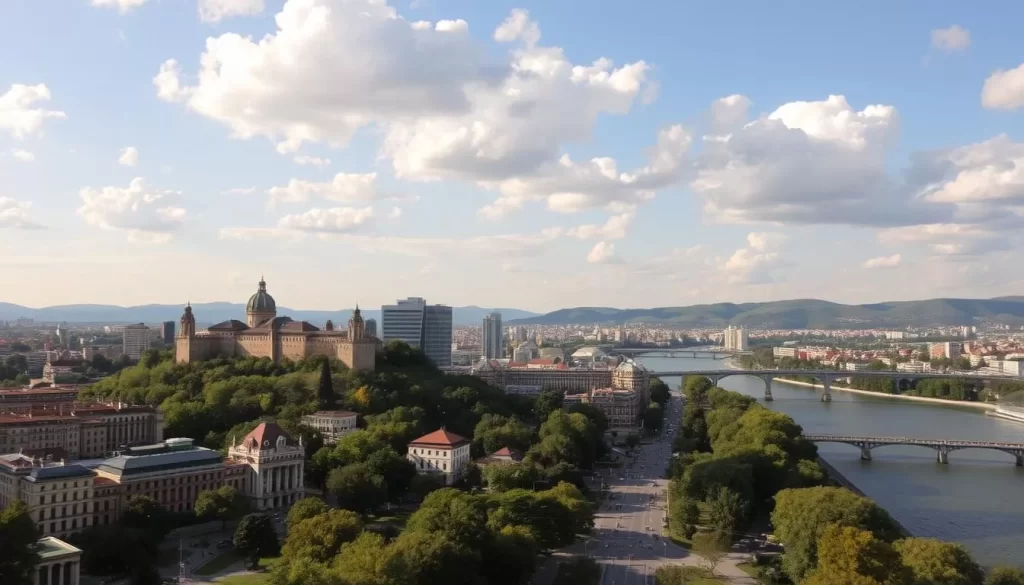
What to Expect in Belgrade
Belgrade surprises many visitors with its unique blend of Ottoman, Austro-Hungarian, and Yugoslav influences that create a distinctly Balkan atmosphere unlike other European capitals. The city has a gritty charm and resilient spirit, having been destroyed and rebuilt numerous times throughout its long history as a strategic crossroads between East and West.
You can expect a place of contrasts where socialist-era buildings stand alongside art nouveau architecture, and traditional kafanas operate next to trendy specialty coffee shops. This blend of old and new contributes to the vibrant life of the city, making it an exciting destination for travelers.
| Aspect | Description |
|---|---|
| Architecture | Blend of Ottoman, Austro-Hungarian, and Yugoslav styles |
| Culture | Rich history, traditional kafanas, and modern coffee shops |
| Atmosphere | Vibrant, gritty charm, resilient spirit |
Best Time to Visit Belgrade
The best time to visit Belgrade is during late spring (May-June) and early fall (September-October) when temperatures are pleasant and outdoor venues are in full swing. Summer (July-August) brings hot temperatures and a lively atmosphere with many festivals, but some locals leave the city. Winter offers festive charm with Christmas markets and fewer tourists.
Belgrade experiences four distinct seasons, each offering a different perspective on city life and unique seasonal activities. From summer swimming at Ada Ciganlija, a popular place for locals and visitors alike, to cozy winter cafes, there’s always something to enjoy in this vibrant city. The people of Belgrade contribute to its charm, making visitors feel welcome in this unique part of the world.
Getting to and Around Belgrade
Whether you’re arriving by plane, bus, or train, Belgrade’s transportation infrastructure makes it simple to reach and navigate the city. Belgrade is a vibrant place that offers a variety of travel options to suit different budgets and preferences.
Flying to Belgrade
Belgrade’s Nikola Tesla Airport is the main international gateway to the city, offering direct flights from major European cities and connections to destinations worldwide. You can find affordable flights to Belgrade from €15 using budget airlines like Wizz Air and Ryanair.
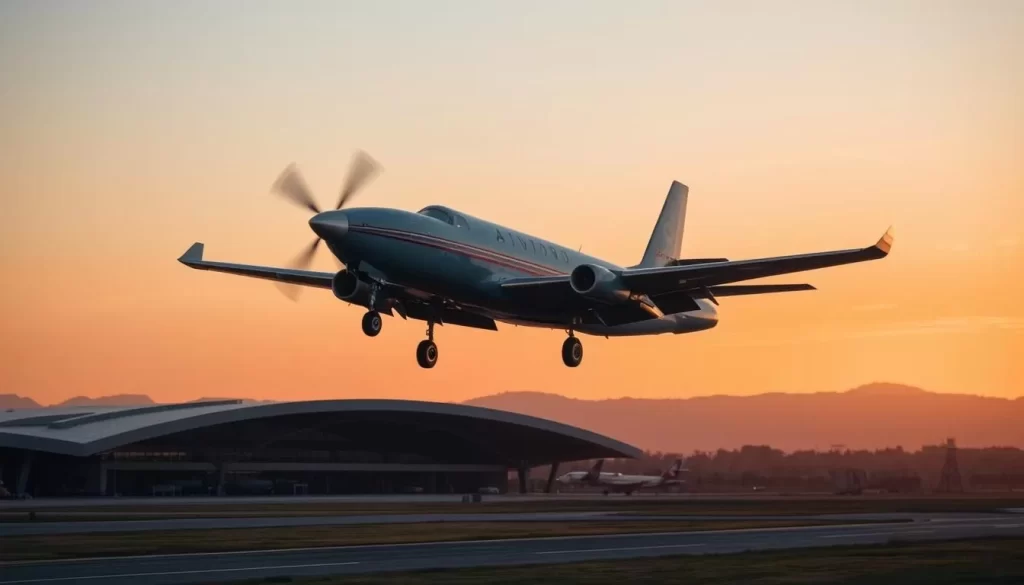
Buses and Trains to Belgrade
For those traveling by land, Belgrade is well-connected by bus to other Balkan destinations. Companies like FlixBus serve routes to Zagreb, Budapest, Sofia, and other regional capitals. You can book your bus tickets at the bus station, though be aware there’s a service fee for using the station’s facilities.
By train, Belgrade Central Station connects the capital with destinations like Novi Sad. One of the most scenic journeys is the Belgrade to Bar train, known for being one of Europe’s most beautiful railway routes. This makes for a great trip experience, exploring the region.
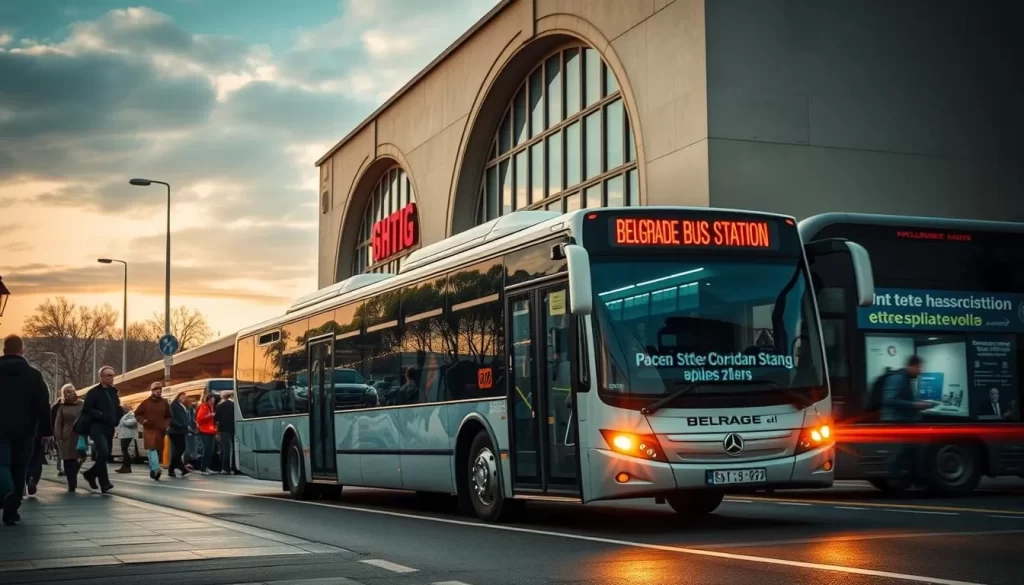
Public Transportation in Belgrade
Once in Belgrade, getting around the city is easy thanks to its comprehensive public transportation system, which includes buses, trams, and trolleybuses. These services are affordable and cover most tourist areas, making it a convenient way to explore the city like a local.
The city center is also compact enough to explore on foot, allowing you to discover its charm at your own pace. For longer distances, taxis and ride-sharing apps like CAR:GO are readily available, providing a convenient option for your tour around Belgrade.
In conclusion, Belgrade’s transportation options make it an accessible and navigable place for visitors. With a little planning, you can easily plan your trip and enjoy all that Belgrade has to offer with the help of a local guide.
Where to Stay in Belgrade
Finding the perfect place to stay in Belgrade can significantly enhance your travel experience. With a variety of neighborhoods and accommodation types, you can choose the one that best suits your needs and preferences.
Best Neighborhoods for Tourists
Belgrade’s different neighborhoods offer unique experiences. Stari Grad (Old Town) is ideal for first-time visitors, providing easy access to major attractions, restaurants, and nightlife. You can immerse yourself in the city’s history and culture by staying in this central area.
Skadarlija, known as Belgrade’s bohemian quarter, offers a charming atmosphere with cobblestone streets and traditional restaurants. It’s perfect for those seeking an authentic experience away from the commercial city center.
Dorćol is a trendy residential area with excellent cafes, bars, and boutiques. It provides a glimpse into local Belgrade life while still being centrally located, making it a great place to stay.
Budget Accommodations and Hostels
For budget travelers, Belgrade offers excellent value at hostels like El Diablo (from €11) and Good People Design Hostel (from €22). Both hostels provide clean facilities and opportunities to meet fellow travelers, making them great options for those on a budget.
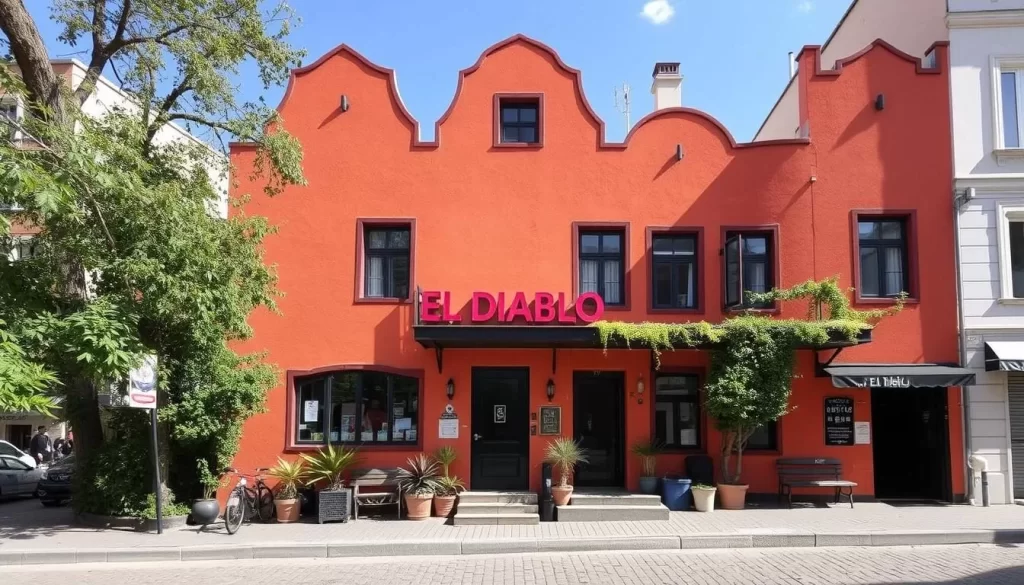
At these hostels, you can expect a social atmosphere where you can meet people from all over the world. Reviews often praise their friendly staff and comfortable place to rest.
Mid-Range and Luxury Hotels
For those seeking more comfort, mid-range hotels like Prince Hall (from €55) and Garni Hotel (from €75) offer excellent amenities, including continental breakfast and spacious rooms. These hotels are centrally located, making it easy to explore the city at your own time.
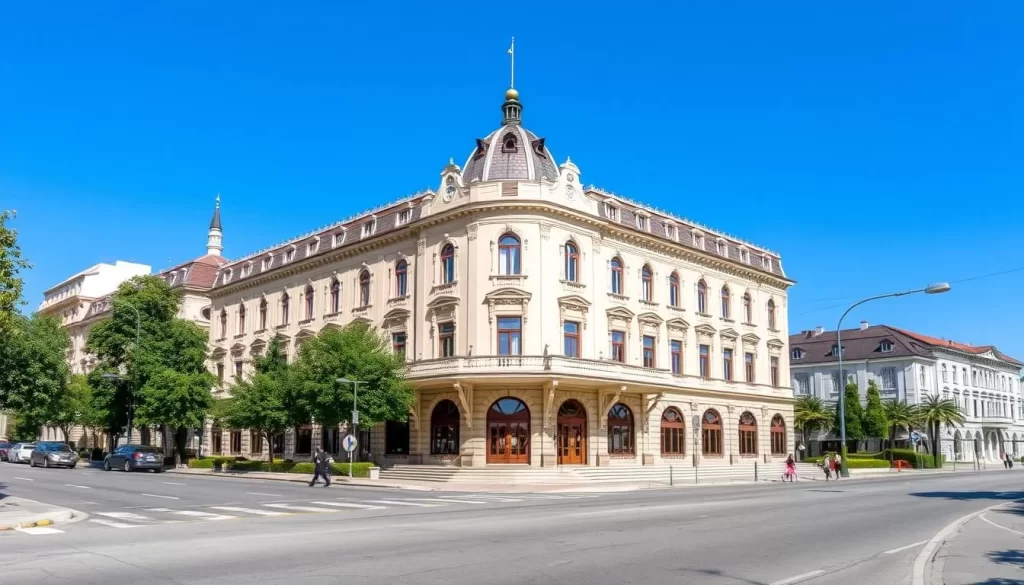
For luxury seekers, Belgrade offers high-end experiences at surprisingly reasonable prices. Properties like Xenon Hotel and Spa provide upscale accommodations from €119 per night, complete with top-notch amenities and services, ensuring a memorable stay in this vibrant city.
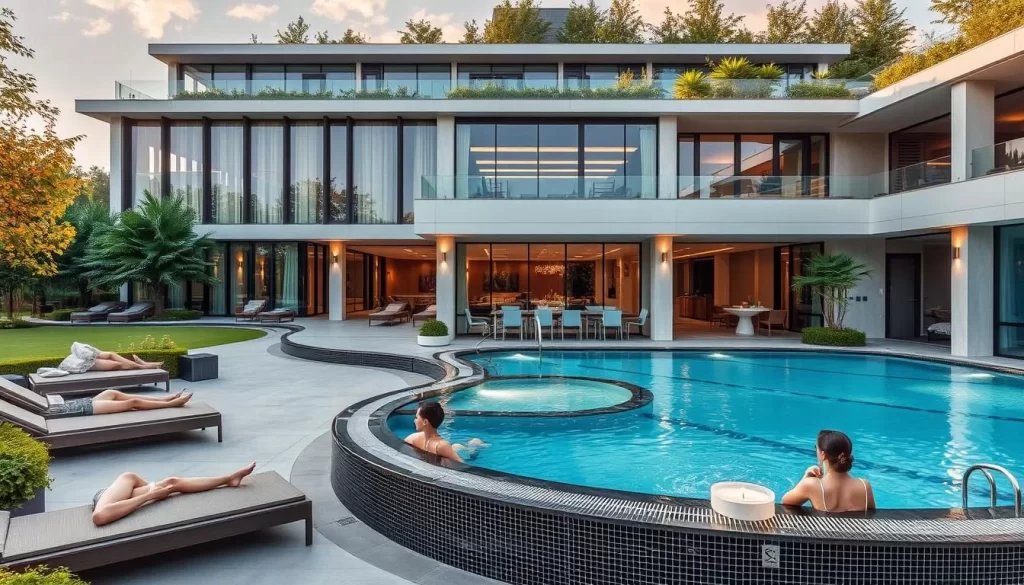
When choosing where to stay, consider reading reviews from other travelers to get a sense of the area and the quality of the accommodation. This can help you make an informed decision and find the perfect place to stay during your visit to Belgrade.
Exploring Kalemegdan Fortress and Park
As you explore Belgrade, a visit to the historic Kalemegdan Fortress is a must, offering a unique blend of history, architecture, and scenic views. This monumental structure has stood the test of time, witnessing over 2,000 years of history and numerous battles that have shaped the city.
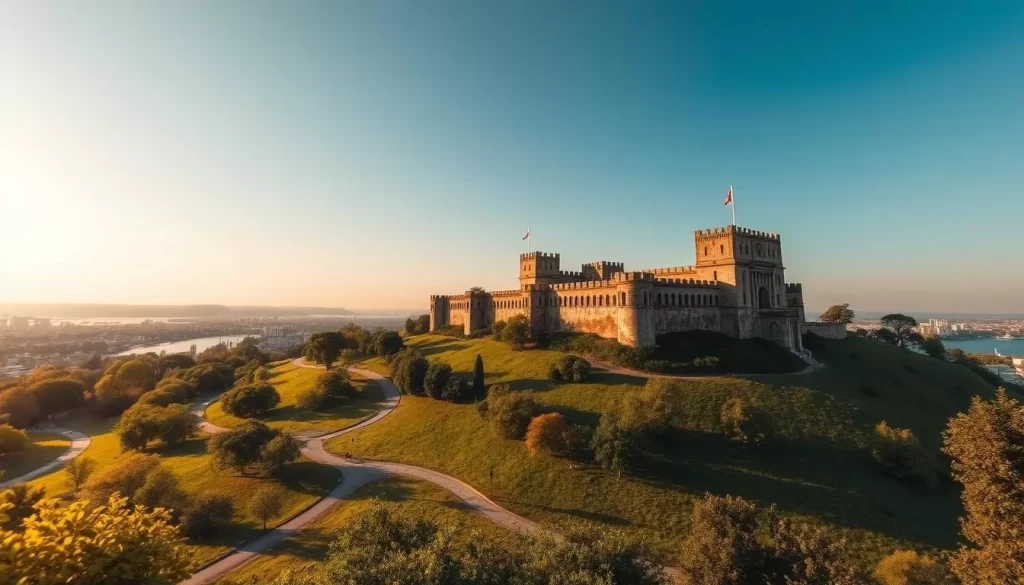
History of Belgrade Fortress
The Kalemegdan Fortress is more than just a historical monument; it’s a testament to the city’s rich and complex past. Occupying a strategic position at the confluence of the Sava and Danube rivers, it has been a contested site for centuries. The fortress has witnessed 115 battles and been destroyed and rebuilt 40 times throughout its tumultuous history. Influences from various occupiers, including the Celts, Romans, Byzantines, Ottomans, and Austro-Hungarians, are visible in its architecture.
The history of the fortress is a story of resilience and adaptation. From its early beginnings to the present day, it has played a significant role in the city’s development. Understanding its history provides a deeper appreciation for the city and its cultural heritage.
What to See Inside the Fortress
Inside the Kalemegdan Fortress complex, you’ll find a wealth of attractions to explore. The ancient gates, towers, and churches are a testament to the fortress’s rich history. You can visit the Military Museum, which houses an impressive collection of weapons, and explore the Roman Well, which descends 60 meters underground.
One of the most iconic landmarks within the fortress is the Victor Monument (Pobednik), a nude male figure with a falcon and sword. This monument commemorates Serbia’s victory over the Ottoman and Austro-Hungarian empires and has become a symbol of the fortress.
Best Viewpoints and Photo Opportunities
The Kalemegdan Fortress offers some of the best viewpoints in Belgrade. The western ramparts provide a spectacular view of the confluence of the Sava and Danube rivers, making it an ideal spot to watch the sunset. You can enjoy drinks at the atmospheric Kalemegdan Terrace café while taking in the breathtaking views.
Whether you’re a history buff, a photography enthusiast, or simply looking for a unique experience, the Kalemegdan Fortress is a must-visit place in Belgrade. Its blend of history, architecture, and scenic views makes it an unforgettable experience.
Strolling Through Skadarlija: Belgrade’s Bohemian Quarter
The bohemian quarter of Skadarlija in Belgrade is a place where tradition meets creativity, featuring cobblestone streets, historic taverns, and a lively cultural scene. As you stroll through this charming area, you’ll be immersed in the city’s rich history and vibrant atmosphere.
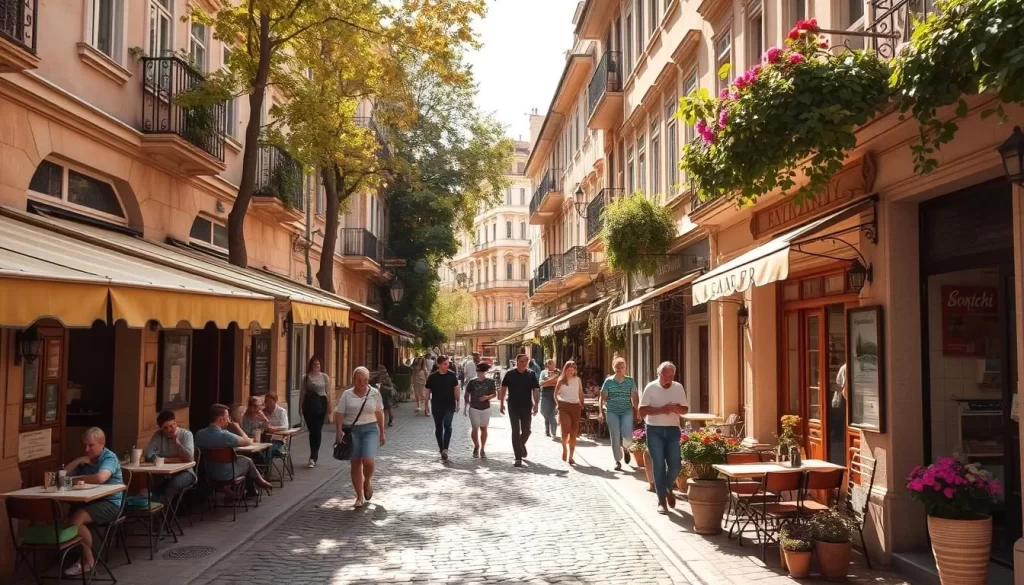
A Glimpse into Skadarlija’s Past
Skadarlija has a long-standing reputation as Belgrade’s bohemian soul, with its roots tracing back to the 19th century when it became a haven for poets, painters, and performers. The district earned its reputation as the “Montmartre of Belgrade” during the early 1900s, attracting creative minds who gathered in its kafanas to debate ideas, create art, and enjoy the free-spirited atmosphere.
This historic place has maintained its charm, with preserved architecture, traditional restaurants housed in centuries-old buildings, and a relaxed ambiance that contrasts with Belgrade’s more commercial areas.
Traditional Serbian Taverns (Kafanas)
The traditional kafanas of Skadarlija, such as Dva Jelena (Two Deers) and Tri Šešira (Three Hats), serve authentic Serbian cuisine accompanied by live folk music. These establishments offer the perfect introduction to Serbian dining culture, where meals are unhurried affairs meant to be enjoyed over hours of eating, drinking, and socializing with people.
| Kafana Name | Cuisine | Ambiance |
|---|---|---|
| Dva Jelena | Traditional Serbian | Cozy, historic setting |
| Tri Šešira | Serbian delicacies | Lively, folk music |
Live Music and Entertainment
Throughout the day and evening, Skadarlija comes alive with the sounds of traditional tamburitza bands playing folk music, street performers entertaining passersby, and the animated conversations of locals and visitors enjoying this living piece of Belgrade’s cultural heritage. This vibrant life makes Skadarlija a unique and captivating destination.
As you explore Skadarlija, you’ll discover that it’s not just a place to visit, but an experience that embodies the spirit of Belgrade. With its rich history, delicious food in traditional restaurants, and lively atmosphere, Skadarlija is a must-visit destination for anyone looking to immerse themselves in the city’s culture.
Belgrade, Serbia: Best Things to Do for History Buffs
History comes alive in Belgrade, Serbia, where ancient fortresses, museums, and historical sites await your discovery. As a city with a rich and complex past, Belgrade offers a unique blend of historical experiences that cater to the interests of history buffs from around the world.
National Museum of Serbia
The National Museum of Serbia, reopened in 2018 after a 15-year renovation, houses over 400,000 artifacts spanning 8,000 years of history. You can explore exhibits ranging from prehistoric times through medieval Serbian art to modern masterpieces. The museum’s highlights include the Roman-era Vršac Gold Treasure, medieval Serbian royal portraits, and an impressive collection of European art featuring works by Monet, Renoir, and Picasso.
Museum of Yugoslavia and House of Flowers
The Museum of Yugoslavia offers insights into the complex history of the former Yugoslav federation. Although it focuses heavily on the life and legacy of Josip Broz Tito, Yugoslavia’s president from 1945 to 1980, the museum provides a comprehensive look at the region’s history. Tito’s mausoleum, known as the House of Flowers, is located within the museum complex and remains a pilgrimage site for those nostalgic for the Yugoslav era. Entry costs 400 Dinar (€3.40), making it an affordable attraction. You can reach the museum from downtown Belgrade by catching bus 44 or 41.
Nikola Tesla Museum
The Nikola Tesla Museum celebrates Serbia’s most famous inventor through interactive exhibits demonstrating his revolutionary contributions to electricity and magnetism. As you explore the museum, you’ll gain a deeper understanding of Tesla’s work and its impact on the modern world. If you’re planning to visit, you can inquire about Nikola Tesla Museum tickets in advance to ensure a smooth visit.

In addition to these museums, history enthusiasts should also consider visiting the Historical Museum of Serbia, the Military Museum in Kalemegdan Fortress, and the Museum of Science and Technology to gain a comprehensive understanding of Serbia’s complex past. Each of these institutions offers a unique perspective on the country’s history and cultural heritage.
Religious Sites and Architecture
From Orthodox churches to Ottoman mosques, Belgrade’s religious sites are a window into its multifaceted history. As you explore the city, you’ll encounter a rich tapestry of religious architecture that reflects Belgrade’s position at the crossroads of civilizations.
Church of Saint Sava
The Church of Saint Sava is one of the largest Orthodox churches in the world, dedicated to Saint Sava, the founder of the Serbian Orthodox Church. Its construction began in 1935 but was only completed in recent decades due to various interruptions. The church’s massive central dome weighs 4,000 tons and took 40 days to be lifted into place.
- The church dominates Belgrade’s skyline with its impressive architecture.
- The interior is adorned with spectacular gold mosaics covering over 15,000 square meters.
- Visitors can explore the crypt located seven meters beneath the church.
Belgrade Cathedral (St. Michael’s)
Belgrade Cathedral, also known as St. Michael’s Cathedral, represents a more intimate religious experience with its 19th-century Serbian-Byzantine style. It houses the tombs of Serbian rulers and the relics of Emperor Dušan, making it a significant place for those interested in history.
The cathedral has survived multiple wars and occupations, serving as a symbol of Serbian Orthodox persistence through difficult times.
Bajrakli Mosque
Bajrakli Mosque is the only remaining Ottoman mosque in Belgrade out of the once 273 that existed before the expulsion of the Turks. It offers visitors a glimpse into the city‘s multicultural past and its ability to preserve its diverse heritage.
These diverse religious buildings reflect Belgrade’s position at the crossroads of civilizations, where Eastern and Western religious traditions have influenced the city‘s architectural and cultural development for centuries.
Belgrade’s Vibrant Neighborhoods
The city’s vibrant neighborhoods offer a glimpse into Belgrade’s complex identity. As you explore these areas, you’ll discover a blend of traditional Serbian life and modern urban culture that makes Belgrade so unique.
Belgrade is incredibly well-connected by public transport, making it easy and affordable to get around the city. Venturing out to the surrounding suburbs is one of the best things to do in Belgrade, and neighborhoods like Zemun offer a relaxing escape from the city’s hustle and bustle.
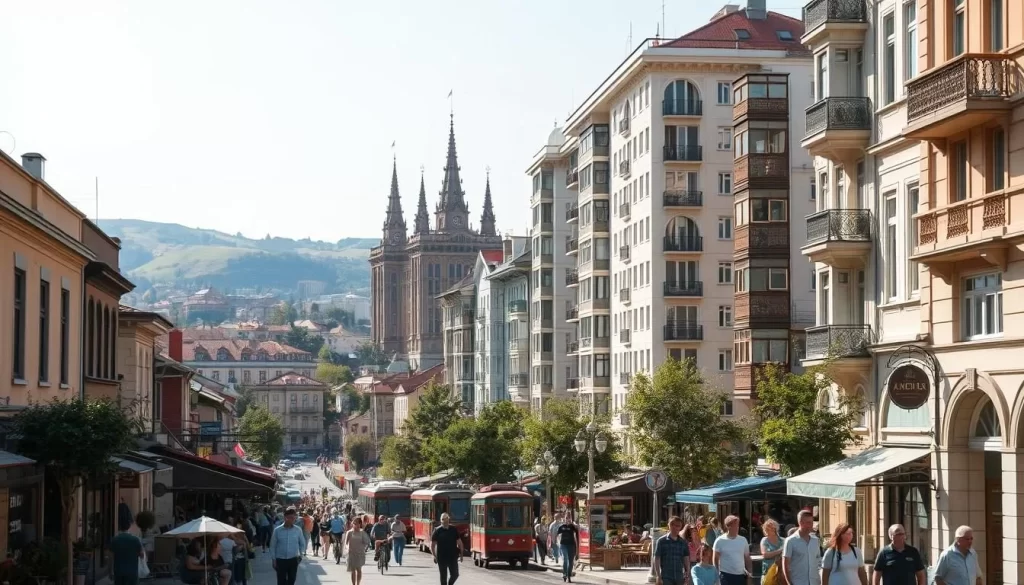
Dorćol: Old Belgrade Charm
Dorćol represents Belgrade’s oldest residential area, where narrow streets lined with pre-war buildings house a perfect blend of traditional Serbian life and modern urban culture. As you wander through this historic part of the city, you’ll notice the transformation from a working-class district to one of Belgrade’s most desirable areas.
- Independent boutiques and third-wave coffee shops have sprouted up, giving Dorćol a unique charm.
- Hidden courtyards reward explorers, offering a glimpse into the neighborhood’s character.
- This area is a great place to experience the local life and culture.
Zemun: Former Austro-Hungarian Town
Zemun functioned as a separate town under Austro-Hungarian rule until 1918 and still maintains a distinct character with its Central European architecture, cobblestone streets, and relaxed riverside atmosphere. As you explore Zemun, you’ll enjoy the panoramic views of Belgrade and the Danube from the Gardoš Tower.
The neighborhood’s fish restaurants along the Zemun Quay serve some of the city’s best seafood, making it a great place to enjoy a meal by the water. Zemun feels very relaxed, and coming here makes for a lovely excursion from the grittier parts of Belgrade.
Savamala: Creative District
Savamala has evolved from a neglected district to Belgrade’s creative hub, where abandoned industrial spaces have been transformed into galleries, design studios, and cultural centers. This neighborhood is a testament to the city’s ability to reinvent itself and create new, vibrant areas.
As you explore Savamala, you’ll see the impact of this transformation on the local people and the city as a whole. It’s an area that showcases Belgrade’s contemporary developments and its role as a creative city.
Each of these neighborhoods provides a different perspective on Belgrade’s complex identity, allowing visitors to experience the city’s various historical influences and contemporary developments within a compact urban area.
Green Spaces and Outdoor Activities
From beaches to botanical gardens, Belgrade’s outdoor spaces provide a unique blend of natural beauty and urban excitement. As you explore the city, you’ll find numerous parks and recreational areas that cater to different interests and age groups.
Ada Ciganlija: Belgrade’s Beach
Ada Ciganlija, affectionately known as “Belgrade’s Sea,” is a must-visit during the summer. This 7km-long artificial lake features Blue Flag-certified beaches, water sports, and various recreational facilities, making it the city’s summer playground.
Visitors can enjoy cycling paths, tennis courts, football fields, basketball courts, and even a golf course, making Ada Ciganlija a perfect escape from urban life without leaving the city.
Tašmajdan Park
For a quick nature break, head to Tašmajdan Park, a centrally located green space near St. Mark’s Church. The park features playgrounds, walking paths, and a sports center, making it popular among locals and visitors alike.
Tašmajdan Park is an ideal spot for families and those looking to enjoy the outdoors in the heart of the city.
Jevremovac Botanical Gardens
The historic Jevremovac Botanical Gardens, established in 1874, is a haven for plant enthusiasts. With over 1,000 plant species, the gardens include a Japanese garden and a Victorian-style greenhouse filled with tropical plants and cacti.
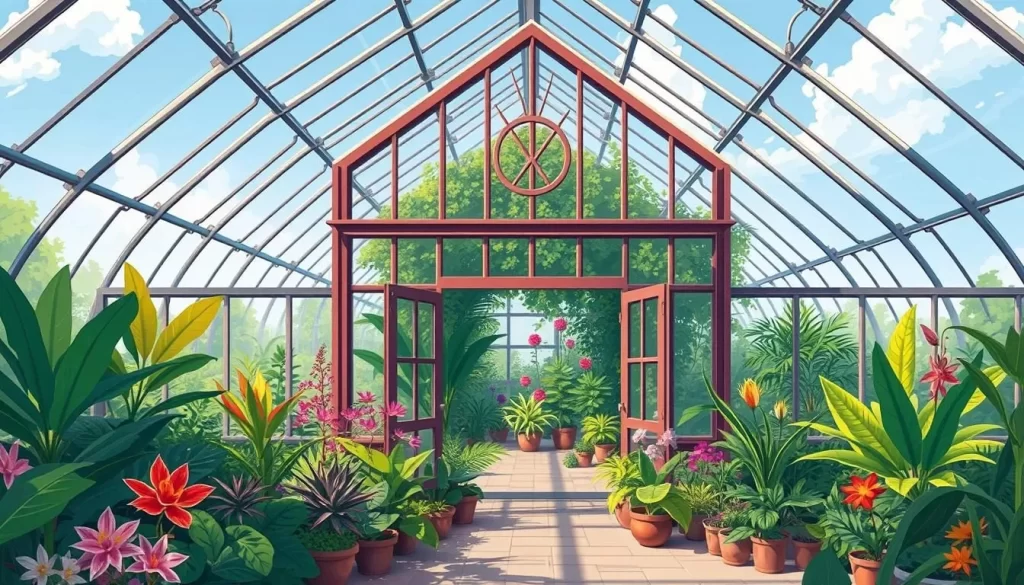
Visitors can stroll through the gardens, enjoying the serene atmosphere and the variety of flora on display.
Outdoor Activities for Families
Belgrade offers numerous kid-friendly outdoor spaces, including the mini traffic school in Park Prijateljstva where children can ride bikes on miniature roadways while learning traffic rules.
These green spaces reflect Belgrade’s commitment to outdoor living, providing crucial breathing space in this dynamic capital city.
Belgrade’s Food Scene: What to Eat
The food scene in Belgrade is a melting pot of flavors, influenced by Ottoman, Austro-Hungarian, and Balkan culinary traditions. As you explore the city, you’ll encounter a wide range of delicious dishes that reflect its rich cultural heritage.
Traditional Serbian Dishes to Try
Serbian cuisine is known for its hearty, meat-centric dishes. Some must-try options include ćevapi (grilled minced meat sausages), pljeskavica (Serbian hamburger), sarma (cabbage rolls), and karađorđeva šnicla (breaded veal or pork stuffed with kajmak cheese).
Vegetarians can enjoy burek (flaky pastry with cheese or spinach), ajvar (roasted red pepper spread), shopska salad, and prebranac (baked beans with paprika and onions). These dishes showcase the diversity of Serbian cuisine.
Best Traditional Restaurants
For an authentic dining experience, head to traditional restaurants called “kafanas.” Some highly-rated options include Dva Jelena, Znak Pitanja (Question Mark), and Zavičaj in the Skadarlija neighborhood.
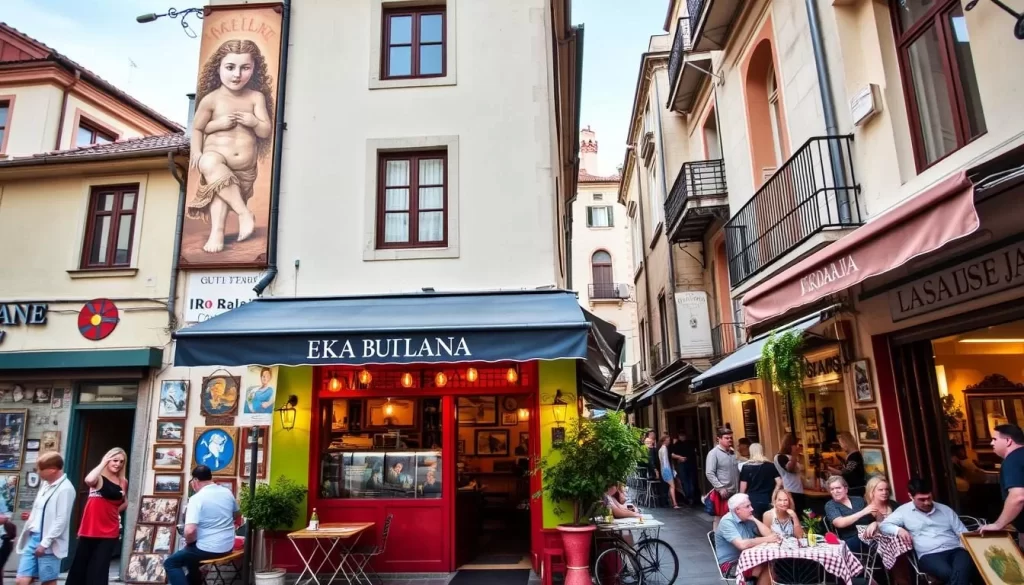
These restaurants offer a chance to try local specialties in a historic setting, providing a truly immersive culinary experience.
Food Tours and Culinary Experiences
To delve deeper into Belgrade’s food scene, consider joining a food tour. Companies like Taste Serbia offer guided tours that visit multiple authentic eateries across different neighborhoods.
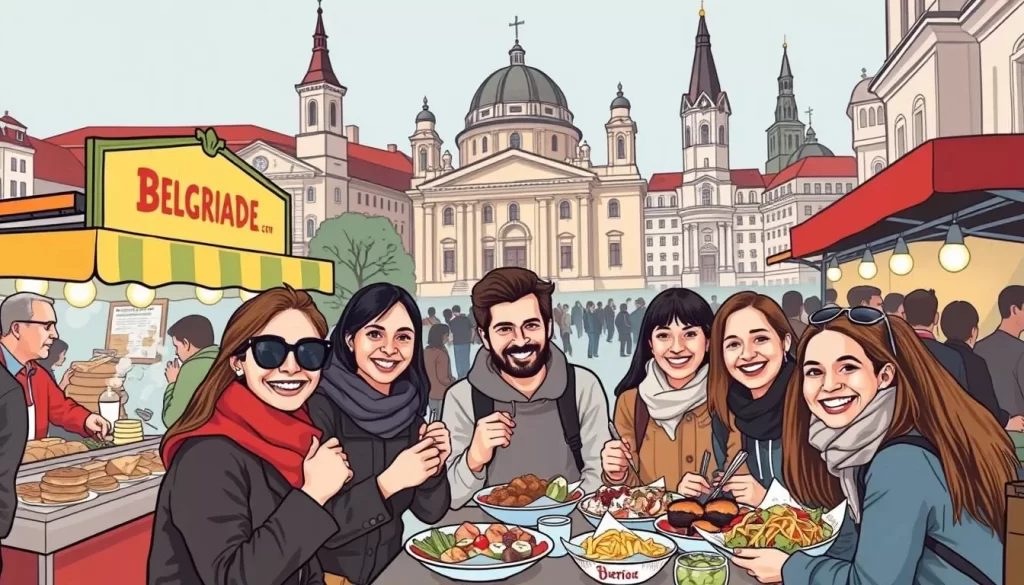
These tours combine eating with cultural and historical insights, providing a comprehensive understanding of the city’s culinary landscape.
Belgrade’s food scene is remarkably affordable compared to other European capitals, with excellent meals at traditional restaurants typically costing €10-15 per person, including drinks. Whether you’re a foodie or just looking to try something new, Belgrade has something to offer.
Cafe Culture and Nightlife
As you wander through Belgrade, you’ll discover a city that’s as cozy in its cafes as it is energetic in its nightclubs. The city’s vibrant social scene is a perfect blend of traditional and modern, making it an exciting place to explore.
The Charm of Belgrade’s Cafes
Belgrade’s cafe culture is a fundamental aspect of daily life, with locals spending hours in coffee shops socializing, working, or simply watching the world go by. Unlike the standardized third-wave coffee shops found in many European capitals, Belgrade’s cafes retain individual character, from communist-era establishments with decades of history to modern specialty coffee bars.
The smoking ban hasn’t reached Serbia’s cafes, creating an authentic if smoky atmosphere that transports visitors to another era. Non-smokers should opt for outdoor seating when possible, enjoying the fresh air in a lively place to relax.
Belgrade’s Legendary Nightlife
Belgrade’s nightlife centers around “splavovi” (floating clubs) anchored along the Sava and Danube river, offering everything from traditional folk music to international DJs on these unique party venues on water. The city’s reputation as a nightlife capital is well-deserved, with clubs often staying open until sunrise.
The diverse scene caters to all musical tastes, from electronic and techno to rock and Serbian turbo-folk, making it a great place to experience the city’s energy.
Best Places to Experience Nightlife
Popular nightlife districts include the Savamala creative quarter with its repurposed industrial spaces, the riverfront clubs in New Belgrade, and the more alternative venues in the Cetinjska Street complex housed in a former brewery. Each area offers a unique lifestyle and atmosphere, ensuring there’s something for everyone.
Shopping in Belgrade
As you explore Belgrade, you’ll discover a vibrant shopping scene that caters to all tastes. From historic streets lined with modern boutiques to bustling markets offering local delicacies, Belgrade is a shopper’s paradise.
Knez Mihailova Street
Knez Mihailova Street is Belgrade’s premier shopping destination, a pedestrianized boulevard that boasts international brands, local boutiques, and historic buildings from the late 19th century. This street is not just about shopping; it’s an experience, with street performers entertaining the crowds and artists selling their work. As you stroll down this iconic street, you’ll feel the pulse of the city.
Local Markets and Bazaars
For a more authentic shopping experience, Belgrade’s markets are the way to go. Bajloni Market, located near Skadarlija, is a sprawling bazaar-style market where you can get lost in the maze of colorful stalls. Here, you can find fresh local produce, homemade rakija (fruit brandy), and interact with friendly local vendors. Other notable markets include Zeleni Venac Market and Kalenić Market in the Vračar district, considered one of the most picturesque green markets in the city, offering seasonal fruits, vegetables, and homemade preserves.
- Bajloni Market: A bustling bazaar near Skadarlija with a wide variety of goods.
- Zeleni Venac Market: Offers fresh produce and local specialties.
- Kalenić Market: Known for its picturesque setting and seasonal produce.
Serbian Souvenirs and Crafts
When shopping for souvenirs, look for traditional Serbian crafts that reflect the country’s rich cultural heritage. Some unique items include woolen slippers (opanci), hand-embroidered textiles, copper items, rakija, ajvar (red pepper spread), and locally produced honey or fruit preserves. You can find these at local markets or at concept stores like Supermarket and Makadam in the city center, which showcase contemporary products with Serbian influences. Shopping in these local area markets gives you a glimpse into the local life.
Day Trips from Belgrade
You don’t have to travel far from Belgrade to discover the beauty and history of Serbia. The city is surrounded by a variety of attractions that make for great day trips.
Novi Sad: Serbia’s Second City
Novi Sad, Serbia’s second-largest city, is an ideal day trip destination from Belgrade. Named the European Capital of Culture in 2022, it boasts colorful architecture, a Habsburg influence, and a relaxed atmosphere, all just 90 minutes away by train or bus.
The imposing Petrovaradin Fortress overlooking the Danube in Novi Sad offers spectacular views and houses museums, restaurants, and the site of the world-famous EXIT music festival held each July.
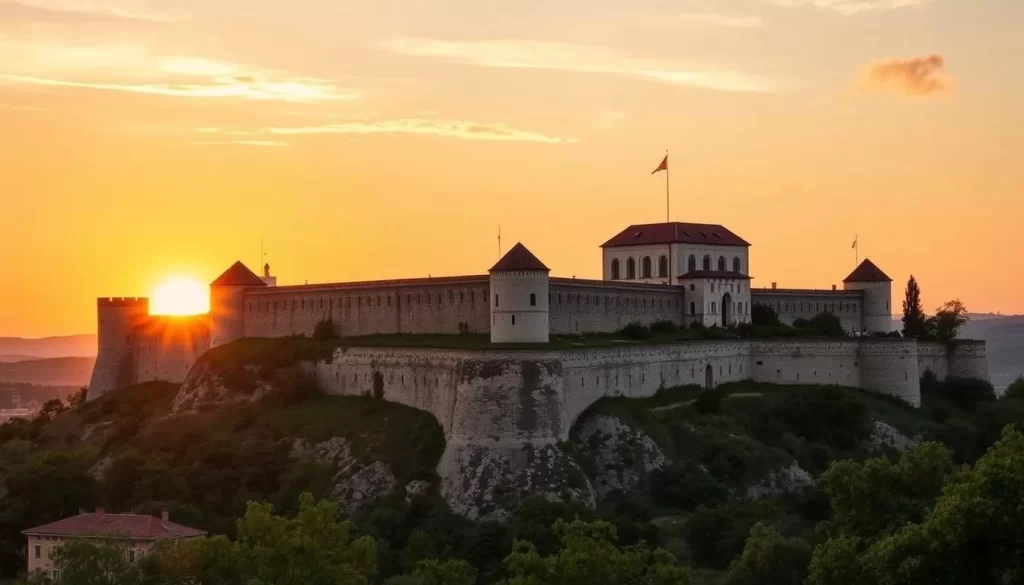
Fruška Gora National Park and Monasteries
Just a short drive from Novi Sad lies Fruška Gora National Park, a haven of natural beauty and cultural heritage. The park features hiking trails through lush forests and 16 Orthodox monasteries dating from the 15th-18th centuries nestled among its hills.
The monasteries of Fruška Gora served as guardians of Serbian culture during Ottoman rule, with Krušedol and Novo Hopovo being particularly notable for their architecture and well-preserved frescoes.
Avala Tower and Monument
For a quick escape from the city, head to Avala Mountain, just 20km south of Belgrade. The mountain is crowned by the 205-meter Avala Tower, rebuilt after being destroyed in the 1999 NATO bombing, and the Monument to the Unknown Hero.
This place offers a mix of history and natural beauty, making it a great day trip destination.
In addition to these destinations, other worthwhile day trips from Belgrade include the medieval fortress town of Smederevo, the Roman archaeological site of Viminacium, and Topola with its royal mausoleum of the Karađorđević dynasty at Oplenac Church. Each of these places offers a unique glimpse into Serbia’s rich history and culture.
Whether you’re interested in history, culture, or simply exploring new cityscapes, there’s a day trip from Belgrade that’s sure to captivate you.
Join a guided tour to make the most of your day trip experience, or venture out on your own to discover the hidden gems of Serbia.
Seasonal Activities and Events
Belgrade’s charm lies in its ability to adapt to the changing seasons, offering something new and exciting for visitors all year round. Whether you’re looking for cultural events, outdoor activities, or simply a unique experience, Belgrade has it all.
Celebrating Summer
Summer is a vibrant time in Belgrade, with the city coming alive with festivals and events. The Belgrade Beer Fest attracts over 500,000 visitors, making it one of the city’s most popular summer events. You can also enjoy the Belgrade Summer Festival, which features a variety of cultural performances, or take in some of the numerous open-air concerts along the rivers.
During the summer months, you can enjoy outdoor cinema screenings in parks, swimming and sunbathing at Ada Ciganlija lake, and vibrant outdoor dining scenes with restaurants extending their terraces onto streets and squares. It’s the perfect time to enjoy the city’s waterfront areas and experience the warm summer atmosphere.
Experiencing Winter
As winter sets in, Belgrade transforms into a magical destination, with Christmas markets in Republic Square, ice skating rinks, and festive decorations throughout the city center. You can visit the Museum of Science and Technology, an interactive kid-friendly museum in Central Belgrade that’s fun for both kids and adults.
The winter season is also a great time to enjoy cozy indoor activities like visiting museums, savoring traditional food in warm kafanas, and experiencing authentic Serbian winter traditions and celebrations. It’s a unique opportunity to explore the city’s cultural side and enjoy the festive atmosphere.
Annual Highlights
Belgrade’s annual calendar is filled with exciting events and festivals that take place throughout the year. Some of the highlights include the Belgrade International Film Festival (FEST) in February, the Belgrade Dance Festival in April, the Belgrade Jazz Festival in October, and the vibrant New Year’s Eve celebrations with outdoor concerts and fireworks.
| Event | Month | Description |
|---|---|---|
| Belgrade Beer Fest | August | A popular beer festival attracting over 500,000 visitors |
| Belgrade Summer Festival | July | A cultural festival featuring various performances |
| Belgrade International Film Festival (FEST) | February | A showcase of international and local films |
Practical Tips for Visiting Belgrade
To ensure a smooth and enjoyable journey to Belgrade, consider these practical tips tailored for travelers. Belgrade, the vibrant capital of Serbia, is a city that seamlessly blends history with modern life, offering a plethora of experiences for visitors.
Currency and Money Matters
Understanding the local currency and how to manage your finances is crucial when traveling to any new city. Serbia uses the Serbian Dinar (RSD) as its currency. Although credit cards are widely accepted in Belgrade, having some local cash is advisable for smaller establishments, markets, and public transportation.
ATMs are plentiful throughout the city center, offering better exchange rates than currency exchange offices. Be aware that some ATMs may charge additional fees, so it’s wise to check the terms before making a withdrawal.
- Use ATMs to get local currency for better exchange rates.
- Credit cards are widely accepted in restaurants, shops, and hotels.
- Keep some cash for small purchases and public transport.
Language Tips and Useful Phrases
While many younger Belgraders speak excellent English, making an effort to learn a few basic Serbian phrases can go a long way in enhancing your experience in this country. Simple expressions like “Hvala” (thank you), “Dobar dan” (good day), and “Koliko košta?” (how much?) are appreciated by locals.
Learning these phrases not only shows respect for the culture but can also lead to more meaningful interactions during your tour of Belgrade.
Safety and Local Customs
Belgrade is generally considered a safe place for tourists, with low rates of violent crime. However, as with any popular tourist destination, it’s advisable to take standard precautions against pickpocketing in crowded areas and tourist spots.
Respecting local customs is also important. For example, removing your shoes when entering someone’s home is a sign of respect, and accepting offers of rakija (fruit brandy) is a gesture of hospitality. Being mindful of these customs can enrich your experience and interactions with locals during your visit at the time of your choice.
Best Free Things to Do in Belgrade
Belgrade offers a variety of free attractions and activities for the budget-conscious traveler. Some of the top free things to do include visiting the Kalemegdan Fortress, exploring the Church of Saint Sava, taking a walking tour of the city, enjoying the riverside promenades, and relaxing in the numerous parks and green spaces throughout the place. These activities not only save you money but also give you a deeper appreciation of Belgrade’s history, culture, and daily life at the present time.
Conclusion: Why Belgrade Should Be Your Next Destination
If you’re looking for a travel experience that combines history, culture, and entertainment, look no further than Belgrade, the capital of Serbia. This vibrant city offers a unique blend of traditional and modern attractions that cater to all types of travelers.
Belgrade provides a refreshingly authentic European experience, untouched by mass tourism, allowing you to enjoy a vibrant city life without the crowds and high prices associated with Western European destinations. The country‘s complex history has created a fascinating cultural blend evident in its architecture, cuisine, and atmosphere, making it an intriguing place to explore.
One of the standout features of Belgrade is its exceptional value for money. You can enjoy quality accommodations, dining, and activities at a fraction of the cost found in other European capitals, making the most of your time and budget. The warmth and hospitality of Belgrade’s residents will make you feel welcome, as locals are genuinely interested in sharing their place and culture with visitors.
Whether you’re interested in historical sites, cultural attractions, outdoor activities, or nightlife, Belgrade has something for everyone. As Serbia continues to develop its tourism infrastructure while maintaining its authentic character, now is the ideal time to visit Belgrade before it becomes the next “discovered” European destination. In this country, you’re not just visiting a city; you’re experiencing a significant part of the world, rich in history and culture, and leaving positive reviews for others to follow.
The above is subject to change.
Check back often to TRAVEL.COM for the latest travel tips and deals.
